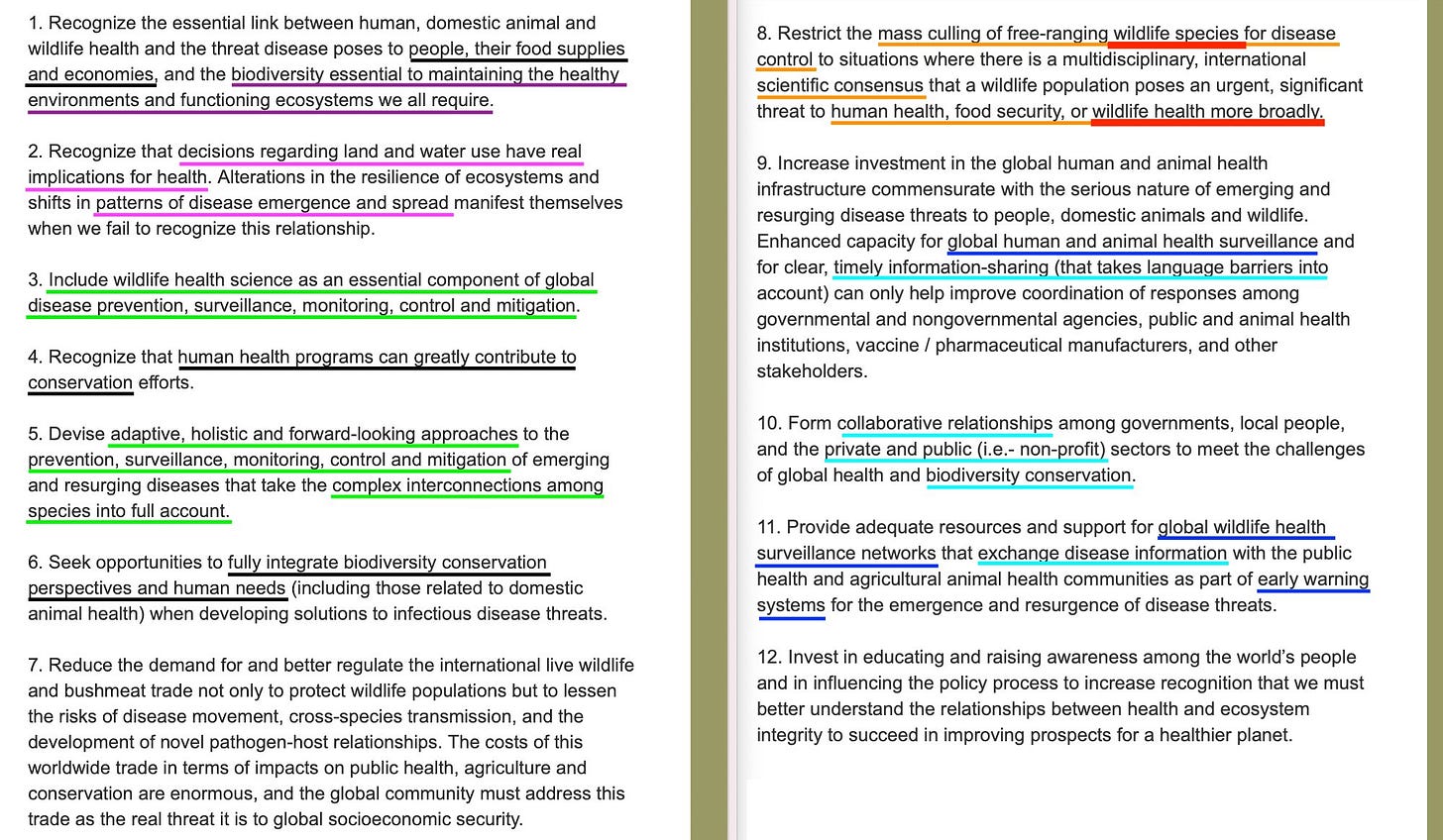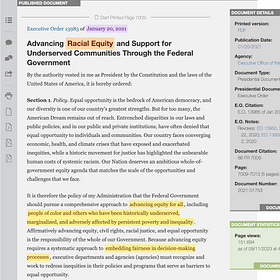Let’s revisit the Pandemic Treaty currently under negotiation. Specifically, let’s look at the below -
Since I first read the Manhattan Principles, I knew the true intent was buried within, if for no other reason but the seemingly clumsy, self-referencing language throughout. It could have been penned in a much simpler way. The authors - Cook, Karesh & Osofsky - are clearly highly intelligent, so it would appear logical to assume this was by intent. The issue is deciphering it. But as said authors are clearly highly intelligent, that’s easier said than done.
But why? Why hide it?
Because you might disagree. And if there’s one thing you should have leaned by now, it’s that they never tell you the honest truth.
So let’s have another look at the Manhattan Principles, delivered by Rockefeller Foundation trustee, and Gates Foundation fellow, William Foege at the Rockefeller Center in 2004.
The very same Foege, who as acting head of the CDC at the time, brought us the first version of an American Pandemic Plan in 1978.
I took the liberty of underlining and merging what I found contextually similar, and relevant. Yes, this is what I tweeted, but since then, I have iterated this continuously to further clarify what I increasingly believe the intent is -
[Black: 1, 4, 6]
human needs (health, food and economies) should be integrated in biodiversity conservation perspectives[Purple: 1]
biodiversity is required by healthy ecosystems[Pink: 2]
ecosystem change (regarding land and water use) drives disease, which in turn threaten humans and their needs[Green: 3, 5]
disease prevention and control should be adaptive, predictive and holistic, and integrate wildlife health science[Blue: 9, 11]
disease prevention early warning systems should integrate human, animal, and wildlife health surveillance[Cyan: 9, 10, 11]
surveillance data should be shared, standardised, and timely, to improve coordinated stakeholder response (governments, big pharma and other NGOs)[Orange: 8]
disease control driven by scientific consensus should protect biodiversity health through mass culling
First off, the most controversial principle of the 12 is item 8. ‘Restrict the mass culling of free-ranging wildlife species for disease control to situations where there is a multidisciplinary, international scientific consensus that a wildlife population poses an urgent, significant threat to human health, food security, or wildlife health more broadly.‘
And this is all for alleged sakes of -
‘human health, food security, or wildlife health more broadly‘
Food security means animal health, and plant life, leading to -
‘human health, plants, animal health, or wildlife health more broadly‘
Wildlife health can be ignored, as it’s included by the other -
‘human health, plants, or animal health more broadly‘
Humans, animals, and plants is biodiversity -
‘biodiversity more broadly‘
At this stage, we can either assume ‘more broadly’ refers to the process of deduction above, or we can assume it means the ecosystem. I will assume the former, because it solves the riddle.
‘… a wildlife population poses an urgent, significant threat to biodiversity‘
When we then throw in the second observation in this regard - humans are a free-ranging wildlife specie. We’re not caged - yet - and not domesticated either. The description technically fits humans. Consequently, should humans be the specie threatening biodiversity, then we are the ones to be culled. Further, principle 3 suggests that wildlife health science should be integrated into the pandemic plan, and principle 6 adds that biodiversity conservation perspectives and human needs should be integrated.
So again - the wildlife population which poses an urgent, significant threat to biodiversity, and consequently intended for mass culling - does that refer to humans? Especially in the context of alleged ‘climate emergency’, which undoubtly is caused by humans, per their argument?
-
So let’s go back to the Manhattan Principles again, because with all this in mind, you could hypothetically rewrite them as per below -
Biodiversity is essential to retain a functioning ecosystem
Ecosystem change - through human use of water and land - drives disease
Disease should be surveilled.
Surveillance data to be shared with stakeholders
Stakeholders include governments, public health institutions, and big pharma
Governments should by edict issue executive action
Health institutions generate the scientific consensus
Big pharma produce vaccines
Executive action, guided by scientific consensus will use vaccines to perform mass culling
Mass culling should be used when a wildlife population poses a threat to biodiversity
… but it’s impossible. Impossible, right?
Or is it?
-
In the article below, we see how the fraud that is the ‘best available science’ really works. You have an executive board - which is either incompetent, corrupt, or complicit, or all three - which takes input from a science board, chock full of connected insiders. In other words, the power doesn’t actually lie with the governance but rather with those who produce the ‘best available science’.
January 20, 2021
Let’s have a look at Biden’s first day in office. Because on day one, he issued a very high quantity of Executive Orders, and they appear to tell a story. - The first executive order (13985) relates to ‘advancing equity for all’ in the face of ‘systemic racism
The Pandemic Treaty - Oct 2023
The October 2023 update to the Pandemic Treaty is not about an illness. It’s an Enabling Act. The document will yield a new hierarchy of power, titled the Conference of the Parties, which will answer to absolutely no voter. They will, through subsidiary organisations
Of course, the Manhattan Principles are also known as ‘One Health’. Per above, they describe using surveillance and vaccines to balance the ecosystem.
Now loop in the recent pandemic treaty update, specifically the screenshot from the top of this article. We have -
‘Reaffirming the importance of multisectoral collaboration at national, regional, and international levels to safeguard human health, detect and prevent health threats at the animal and human interface, zoonotic spill-over and mutations, and to sustainably balance and optimize the health of people, animals, and ecosystems, in a One Health approach‘
-
Oh, that’s funny. What a remarkable coincidence.








Quote "10 Mass culling should be used when a wildlife population poses a threat to biodiversity"
I think they are referring to humans here!